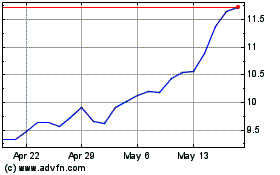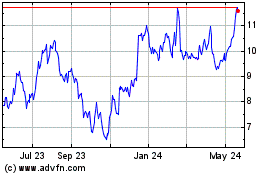Persistent inflation continues to influence the Federal
Reserve’s decision making in 2024, amidst ongoing moderation in
overall economic and labor conditions. These factors create a
complex and mixed outlook for commercial real estate assets
according to Cushman & Wakefield’s (NYSE: CWK) mid-year Macro
Outlook report.
“Cracks are forming beneath the surface, as consumers and
businesses remain under pressure from the cumulative effects of
higher interest rates and inflation,” said Rebecca Rockey, Deputy
Chief Economist and Global Head of Forecasting at Cushman &
Wakefield. “Some sectors have been, or are in, contraction mode.
The manufacturing and transportation sectors have been anemic, if
not recessionary. Job growth is concentrated in lagging sectors
like government, education and healthcare.”
Office
The rationalization of office space usage is continuing in 2024,
and consistent with Cushman & Wakefield’s prior outlook, with
net absorption projected to be negative this year at -63 million
square feet (msf) and -7 msf next year. Demand is expected to
average 20-25 msf per year as we go into the second half of the
decade.
“Although office jobs will continue to grow, office demand is
still adjusting to hybrid work. We believe we are further along in
that process beyond what weighted average lease terms imply, as
about half the space on the sublease market has an underlying
expiration date in 2028 or beyond. Occupiers have pulled forward
future downsizing,” said David Smith, Head of Americas
Insights.
Trifurcation remains a key theme, however, there are bright
spots in the office sector, including 30% of Class A buildings that
have essentially no vacancy and another 20% that have sub-15%
vacancy. The bottom 10% of office assets account for over 730 basis
points (bps) of current vacancy, reflecting a growing weight that
these highly challenged and likely obsolete buildings have on
headline statistics.
Capital Markets
Investors will remain income-focused for the foreseeable future
as existing debt slowly re-prices into the higher-rate environment.
Fortunately for most asset classes, the NOI outlook is decent if
not robust, growing by 1.5% to 2% this year and next (in a
diversified portfolio) before accelerating to the 4.5% to 7.5%
range in the following years.
“Despite the fact that some measured cap rates will march
upwards as credit spreads normalize off higher base rates, we
forecast that total unlevered returns will again reach
double-digits and high-single-digits in 2026 and beyond,” said Abby
Corbett, Senior Economist, Head of Investor Insights. “Buyers and
sellers are growing increasingly more open to act, though both
sides remain cautious and selective in the near term. Debt
maturities and other liquidity-based needs should continue to
motivate sellers to meet the market, thereby improving price
discovery for the marketplace more broadly.”
The long-awaited distress wave will continue to disappoint
opportunistic capital sitting anxiously on the sidelines, as the
process unfolds at a slow, sequential, and often boring pace. In
2023, only 1.8% of total sales were distressed sales and many
delinquency rates remain low or are holding steady. This is
obviously not true for the office sector where expected distress is
greatest—as well as for regional malls and hotels.
Industrial
While e-commerce continues to increase as a percent of retail
sales, some of the pull-forward effect—firms building out sooner
and faster during the pandemic—will weigh on the demand outlook for
2024 and the first half of 2025.
New supply will be a key factor driving vacancy in 2024 for most
markets, as another 381 msf delivers throughout the market this
year. The pipeline is dropping off significantly and is projected
that only 160 msf will be delivered in 2025. From there, lower
interest rates and improving fundamentals will help drive a new
construction cycle. Absorption is expected to hit a trough of just
over 100 msf in 2024 before roughly doubling in 2025. It is
projected to return to a more typical demand run rate in 2026.
“The imbalance in supply and demand seems starker than it
is—vacancy is expected to peak in early 2025 at 6.7% before
starting to compress back toward 5% by the end of our five-year
forecast horizon. For context, this is consistent with the lowest
vacancies recorded in prior cycles, meaning this cycle is
fundamentally different,” said Jason Price, Senior Director,
Americas Head of Logistics & Industrial Research.
Rent growth is moderating on par with expectations after having
grown by 54% since Q4 2019. Cushman & Wakefield projects rent
growth will come in at 3% in 2024 and 2% in 2025 before picking
back up to the mid-single digits.
Retail
Demand for retail space remains robust, in part because of a
strong pipeline of store openings by large retailers. Year-to-date
there have been roughly 850 more store openings planned than
closures.
“The tenant mix continues to diversify, limiting the downside
risk of sector-specific weakness. Beyond traditional retailers,
consumer service providers—including restaurants,
education/healthcare, beauty and wellness—are leasing more space in
retail centers. Consumers will continue to rotate back to
service-oriented spending that has lagged post-pandemic, benefiting
retail centers featuring these offerings,” said James Bohnaker,
Senior Economist.
The lack of new supply is a key aspect of the outlook. With less
than 12 msf feet of retail space under construction, and over 4.3
billion square feet of inventory, high-quality retail locations
will remain scarce. New supply is not expected to ramp up to its
2010-2019 average until 2027, at the earliest.
Owners of well-located shopping centers will continue to have
leverage to raise rents given the demand and supply dynamics,
although rent growth is poised to slow over the next several years.
After peaking at 5.0% in 2022, rent growth will average 2.9% from
2024-2026.
About Cushman & Wakefield
Cushman & Wakefield (NYSE: CWK) is a leading global
commercial real estate services firm for property owners and
occupiers with approximately 52,000 employees in nearly 400 offices
and 60 countries. In 2023, the firm reported revenue of $9.5
billion across its core services of property, facilities and
project management, leasing, capital markets, and valuation and
other services. It also receives numerous industry and business
accolades for its award-winning culture and commitment to
Diversity, Equity and Inclusion (DEI), sustainability and more. For
additional information, visit www.cushmanwakefield.com.
View source
version on businesswire.com: https://www.businesswire.com/news/home/20240620409224/en/
Mike Boonshoft michael.boonshoft@cushwake.com
Cushman and Wakefield (NYSE:CWK)
Historical Stock Chart
From May 2024 to Jun 2024

Cushman and Wakefield (NYSE:CWK)
Historical Stock Chart
From Jun 2023 to Jun 2024
